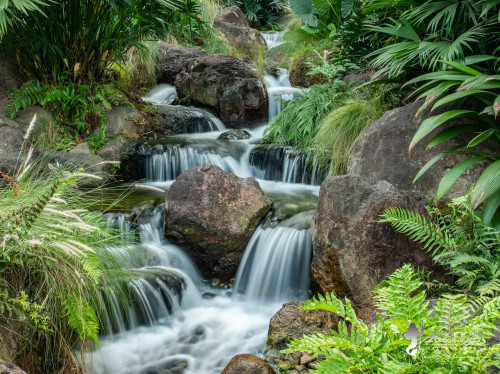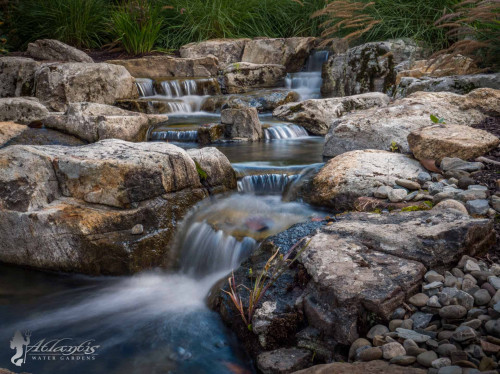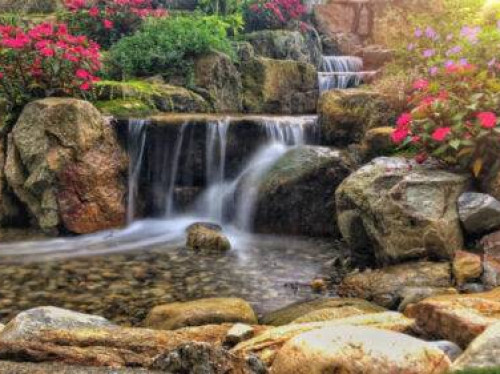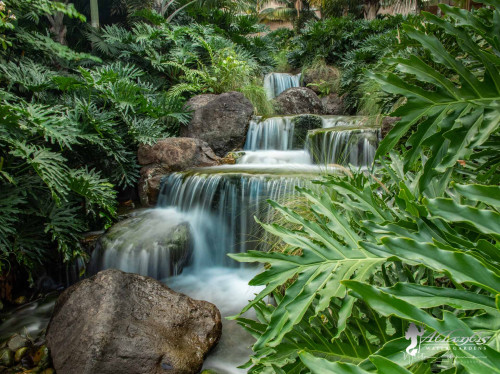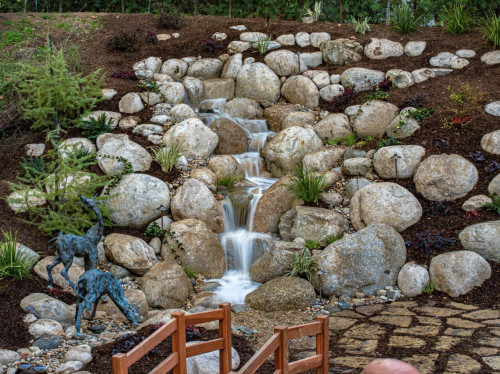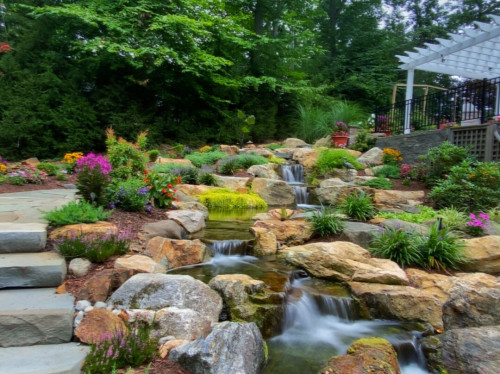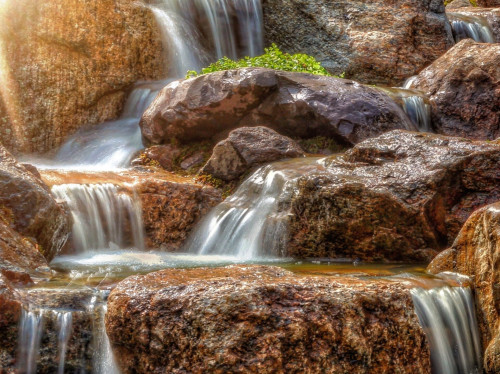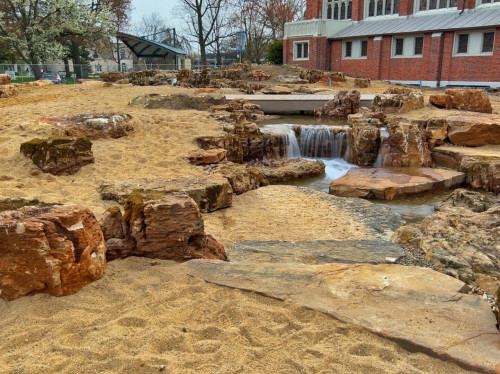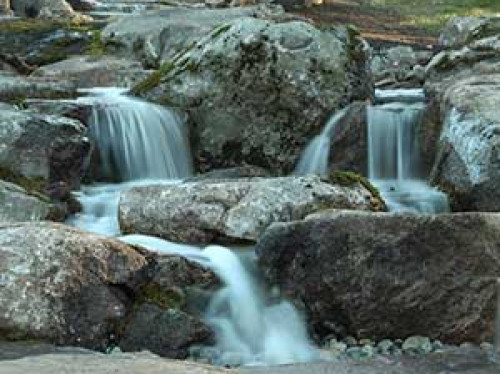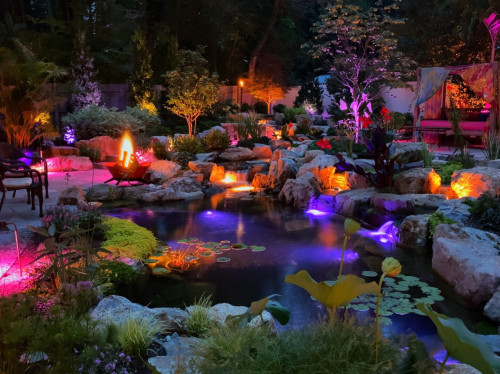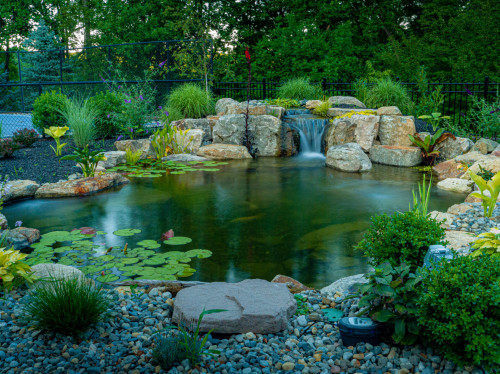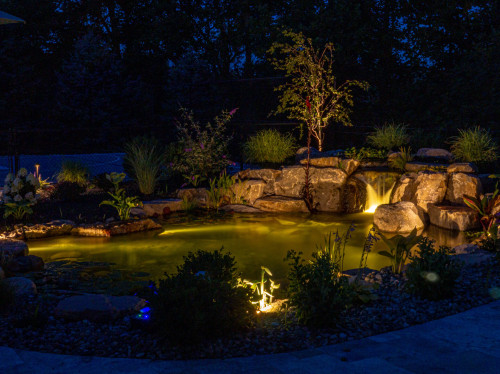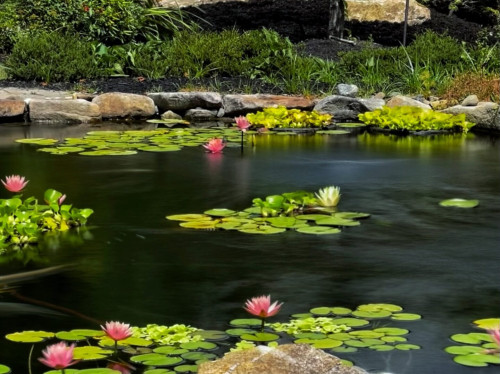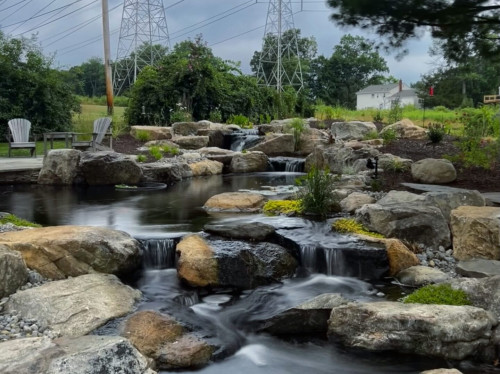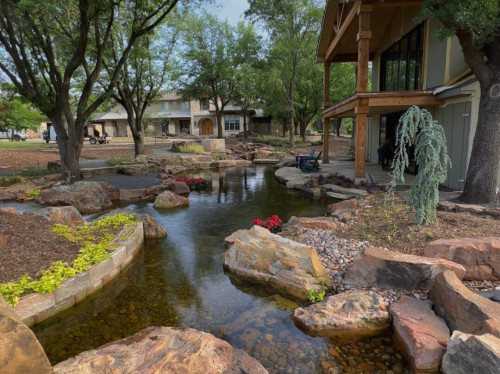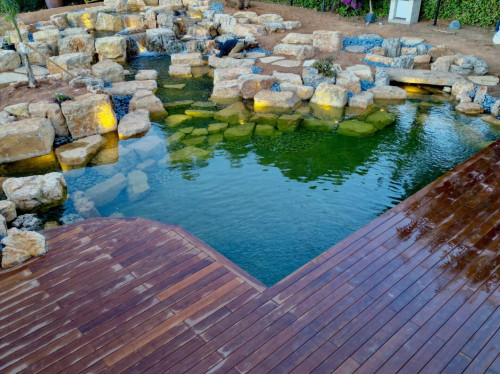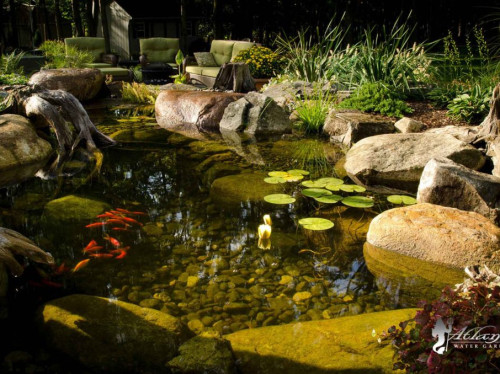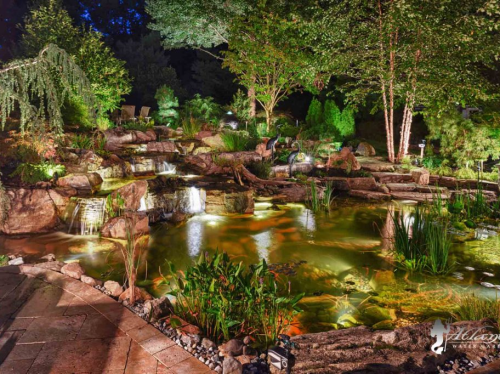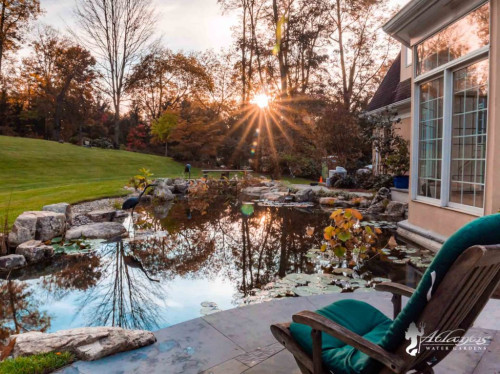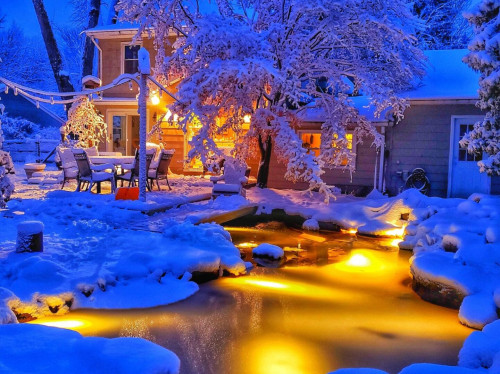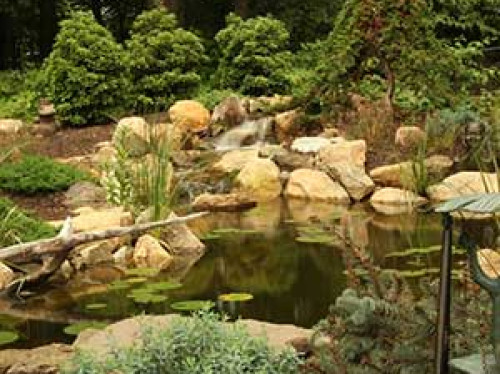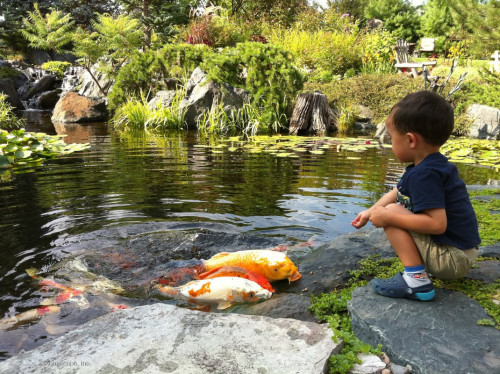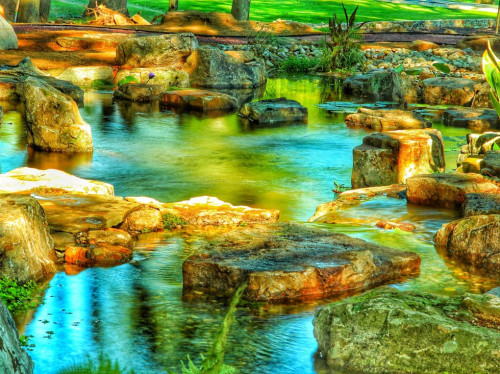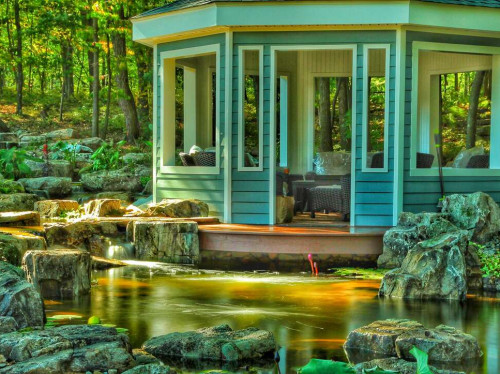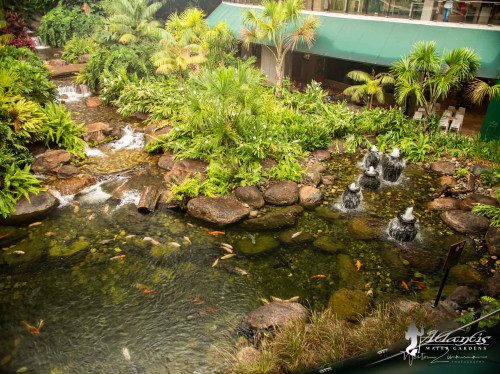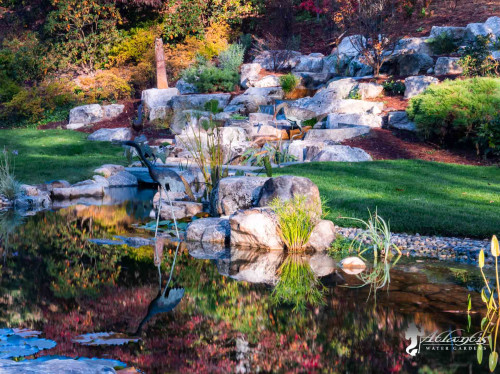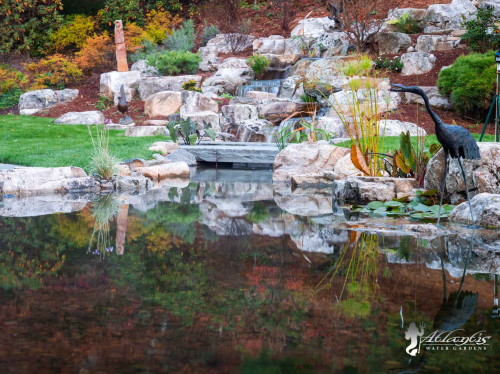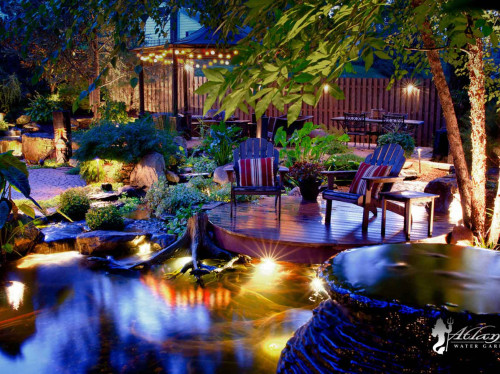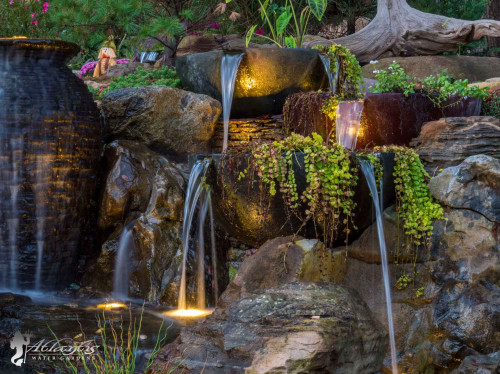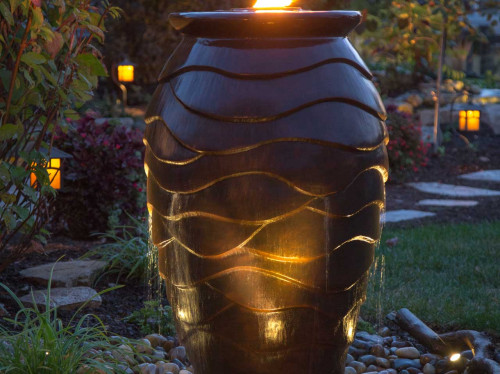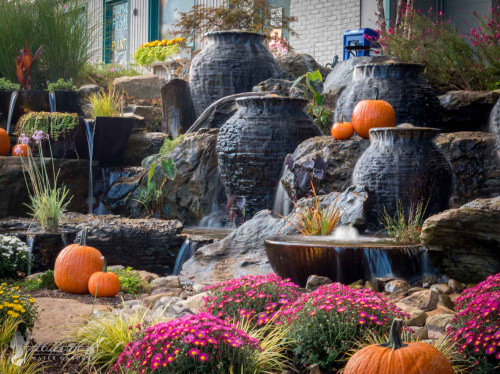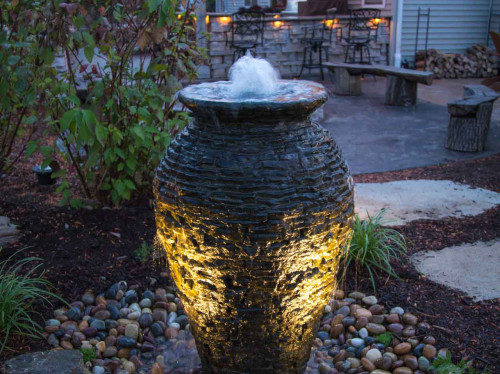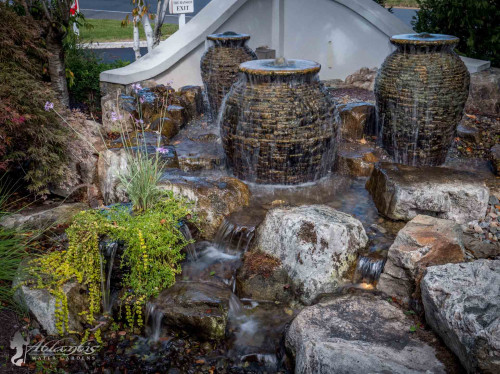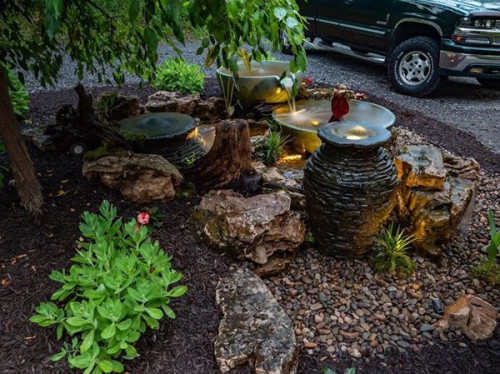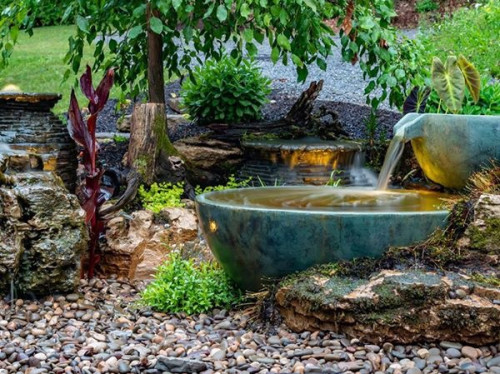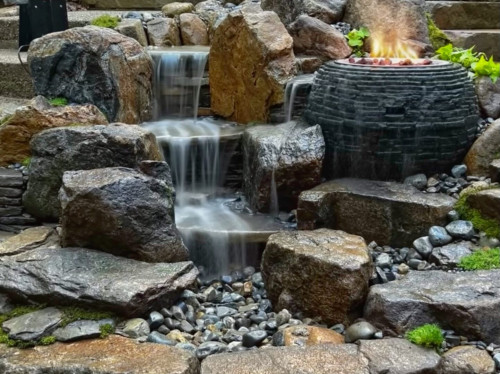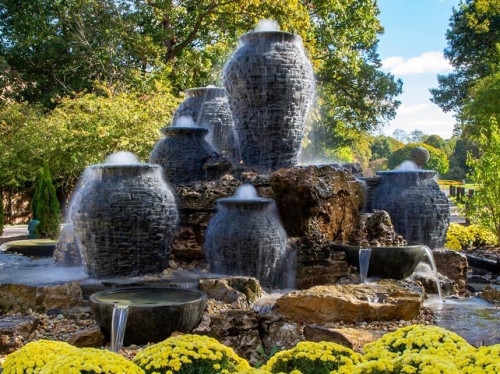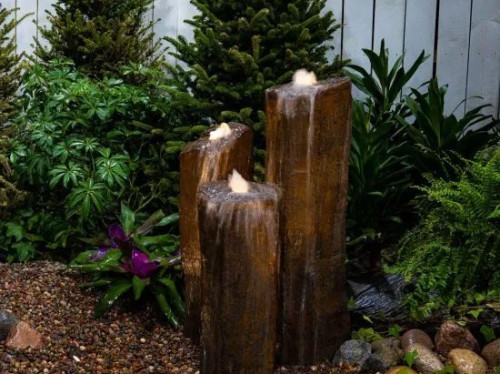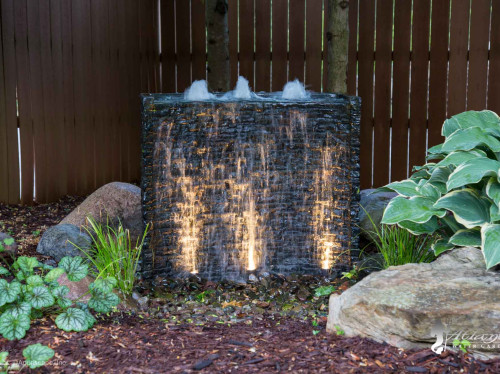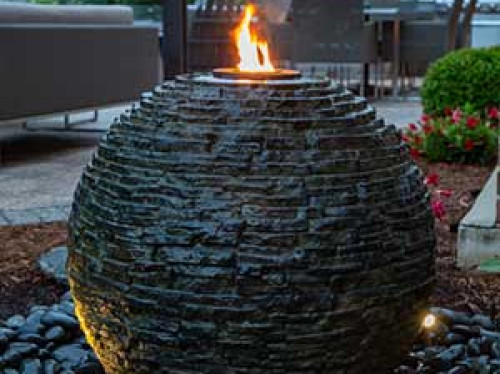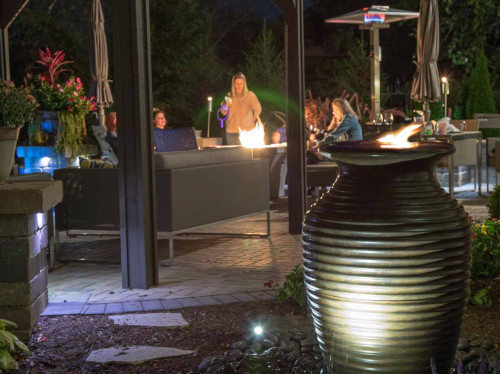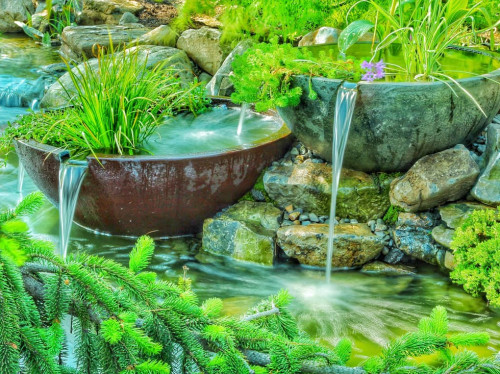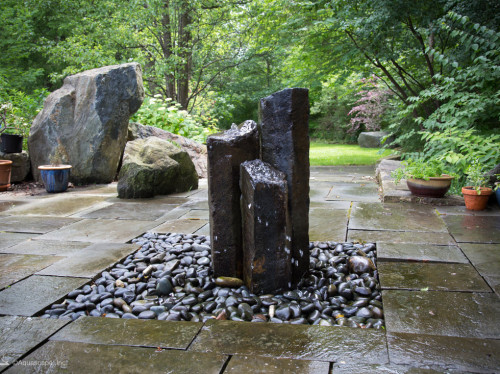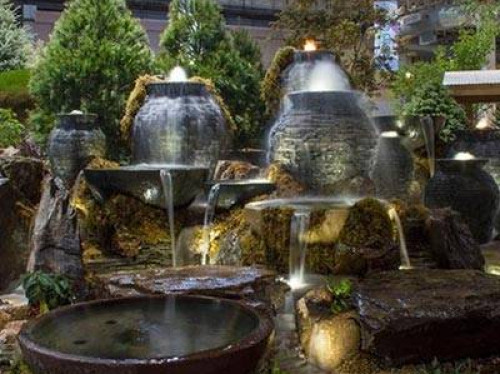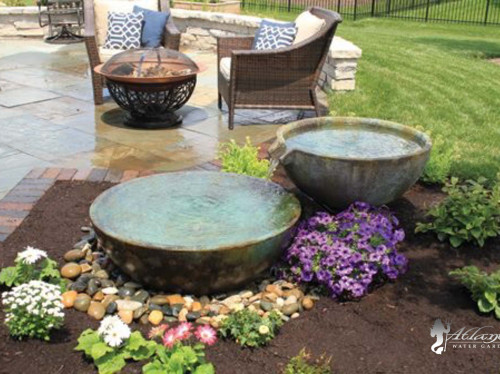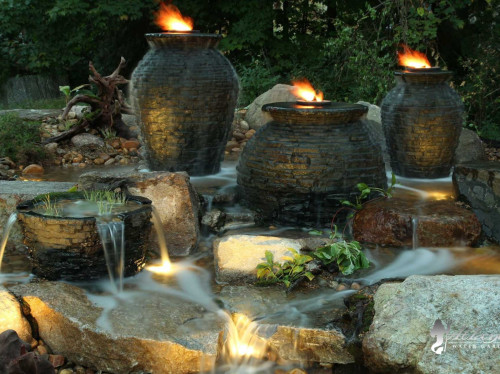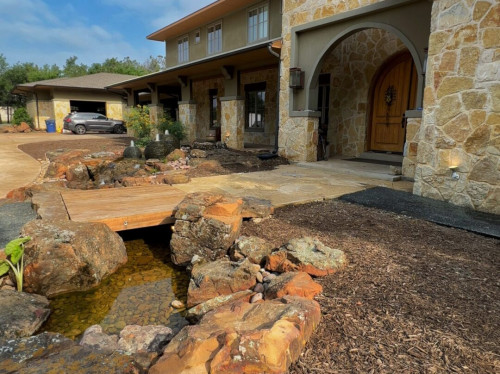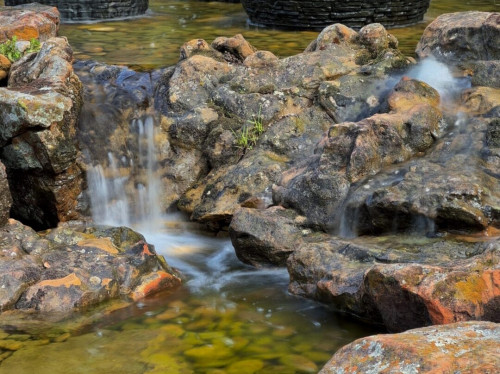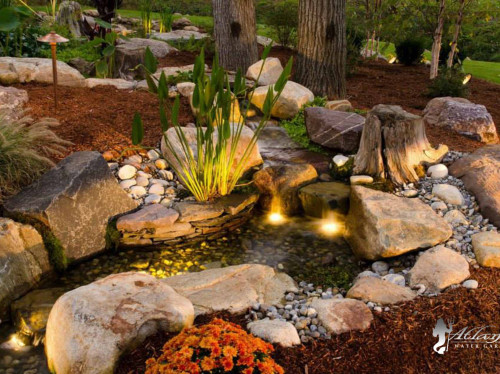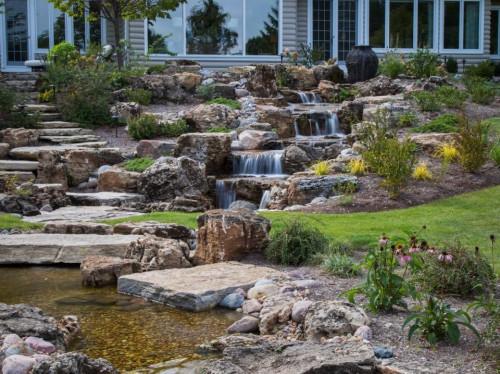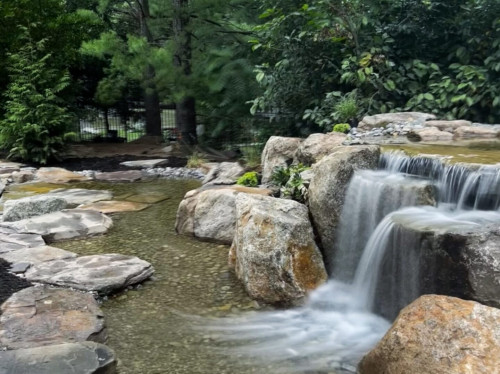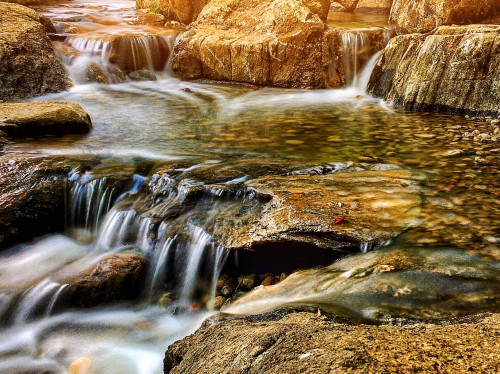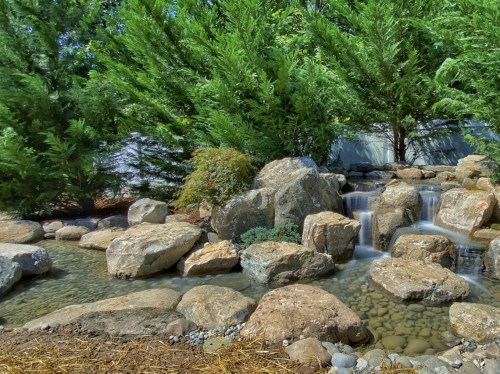Most pond owners will encounter an algae problem at least once during the lifespan of their pond. While it’s normal for ponds to have algae to some extent, thick layers of algae can indicate a problem.

Murky green algal blooms are not just an eyesore, but they can also compete with your plants and fish for sunlight and deprive them of the nutrients they need to grow. Excessive algae growth in a recreational swim pond in Short Hills can lead to oxygen depletion, causing fish kills.
Algal blooms are usually caused by large amounts of phosphorus and nitrogen in the water. There are several methods and products for removing algae from a pond, but not all are safe for fish. A regular algaecide, for example, can kill fish if used incorrectly.
Fortunately, there are ways to remove algae from ponds without harming the fish. We have compiled a list of some such ways. Take a look.
Rake Out the Algae
This is the simplest way to remove string or matted algae safely. Using a rake or a swimming tool, manually remove as much algae as you can from the surface of the water. To clean a pond with a rubber pond liner, use a plastic rake instead of a metal rake, as it can damage the liner. Be careful to avoid injuring your fish. This is a short-term solution and won’t prevent algae from growing back.
Add Barley Straw to Your Pond
Barley straw removes algae and also prevents new growth. Submerge a bundle of barley straw in your pond and let it float around close to the center. Soon the straw will start to break down, releasing organic compounds that kill algae into the pond. Wondering how much barley you should add to your pond? Around 8 ounces or 230 g of barley can treat 1,000 gallons of water. So, if you have a 5,000-gallon pond, add 1,150 g of barley to it. Because barley straw is organic, this is a perfectly safe approach to removing algae from a pond.
Use Beneficial Bacteria Tablets
Beneficial bacteria tablets are available at pet stores. They are perfectly safe for fish. Place a tablet in your pond. Beneficial bacteria break down organic waste and help keep bad bacterial populations in check. For maximum effectiveness, add a tablet to every 1,000 gallons of water.
Use a UV Sterilizer
A UV sterilizer only emits enough UV light to kill free-floating algae, and is harmless to fish. Do not become alarmed if your water turns gray or brown after you install a UV sterilizer. This is a sign that the algae in your pond are dying. Before installing a UV sterilizer, remove as much algae from your pond as possible using other methods. Avoid using a water clarifier to remove the dead algae during UV treatment, as it can clump your fish’s gills together
Atlantis Water Gardens is a renowned water feature contractor in Short Hills. Our water feature experts have years of experience installing, servicing, and renovating different water features. To learn more, call 973-627-0515.
Take The Plunge!
Schedule a phone call and get to pick the brain of one of our experienced designers about your project Schedule My Call NowLovin’ It? Want more pics?
We got em. 🙂 Here’s some pretty photos you can look at to destress.

